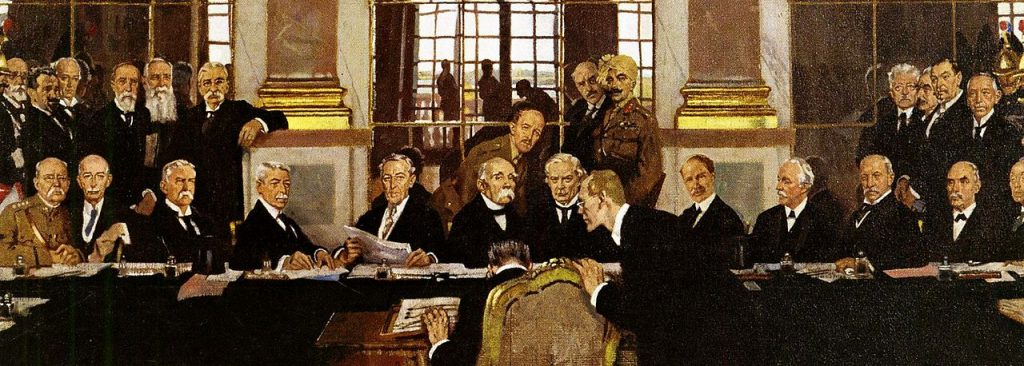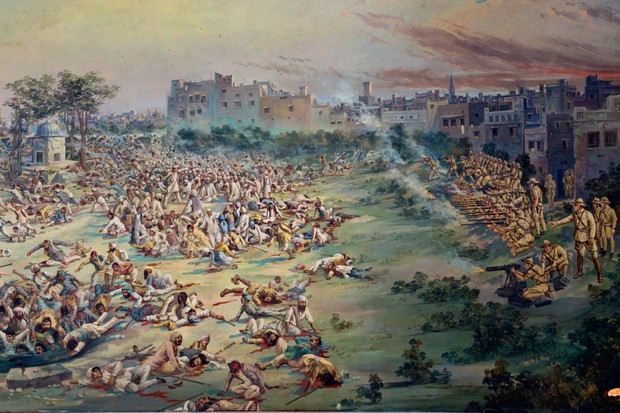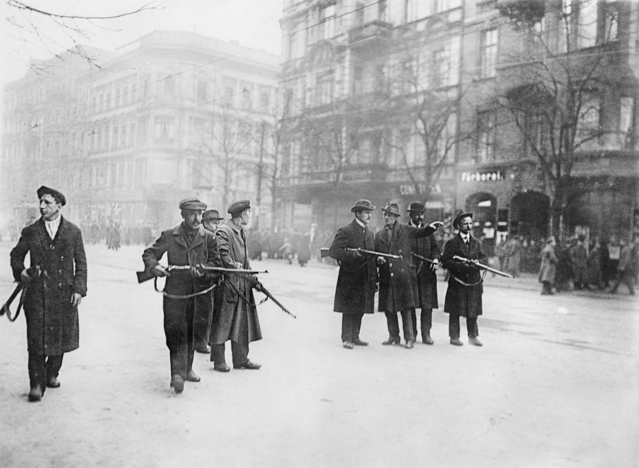A Year in Review: 1919
I almost decided not to do a podcast looking at 1919, even though it has been on my editorial calendar* since roughly this time last year. My friend Elizabeth Lunday is doing an amazing job looking at 1919 in detail and from many different directions on her podcast The Year That Was. It is living up to my expectations, which were high indeed.
In the end, however, I couldn’t quite walk away from it. I had so many notes. And it was such a critical year. Instead of bringing peace, the end of the war to end all wars left unresolved conflict in many forms its wake. This is probably true of all wars, now that I think about it, but it happened on an unprecedented scale after World War In the aftermath of the war, people attempted to rebuild the world, and tore it apart in the process.

The Versailles Peace conference in which old white men in black coats determined the fate of the world.
The most obvious example of this was the Versailles Peace Conference, which began in January 1919 and officially ended in 1920. The treaty produced at the conference:
- Gutted Germany economically and emotionally, contributing to the rise of the Nazi party and the violence of World War II
- Dismembered the the Austro-Hungarian and Ottoman empires
- Divided up the Middle East, creating a political puzzle that continues to baffle diplomats
(It is worth remembering that the United States did not sign the Versailles Treaty. Instead we signed a separate treaty with Berlin because the Senate would not ratify our inclusion in the League of Nations, which was also a product of the peace conference.)
In addition to a seriously flawed peace treaty, the end of the war left many people with unrealized expectations about social changes. The failure of those expectations to materialize resulted in violence, often at the hands of those who did not want social change to occur. Some examples:
- Indian nationalists expected to received self-rule on the dominion model in recognition for their support of the British empire in the war. Instead they got repressive laws and the Amritsar Massacre at the hands of a twitchy British brigadier-general
- A similar combination of high hopes and toxic backlash resulted in the Red Summer of 1919 in the United States. Black soldiers came home to an atmosphere of increased racial tension fueled by competition for jobs and housing, white fears of black upward mobility and black discontent with the state of civil rights. Faced with anti-Black race riots, they fought back.
- Uprisings began in Germany in November, 1918, just as the war ended. Sailors mutinied at Kiel. The army’s brutal suppression of the mutiny set off a series of strikes and military rebellions that spread across the country, culminating in the left-wing Spartacist uprising in January 1919. The revolution was put down by force with the help of Freikorps volunteer militias, which had been formed by returning soldiers with support from the army. Heavily armed militia units retook the public buildings that the revolutionaries and previously seized and shot hundred of the demonstrators, including those who had already surrendered.
Here are a few other high or low points from 1919 that I’ve spent some time thinking about:
- • The Great Boston Molasses Flood occurred on January 15. It sounds funny, until you picture the reality of 2 million tons of molasses pouring at 35 miles an hour through a busy commercial district in Boston in the middle of the day. The fifteen-foot high wave killed 21 people, injured 150 more, snapped supports that held up an elevated train and smashed buildings. The company that owned the faulty molasses tank tried to blame anarchists—the early twentieth century equivalent of blaming terrorists. In fact, it turned out that shoddy construction was to blame—leading many states to pass laws requiring that engineers and architects approve plans for major construction projects. Building permits have a purpose beyond plumping up municipal coffers.
- On January 16, Nebraska ratified the 18th Amendment, prohibiting the sale of “intoxicating liquors” , completing the ratification process. The Amendment didn’t include a process for implementing the ban: that came with the passage of the Volstead Act on October 28, 1919. Prohibition went into effect with a roar on January 17, 1920, and stayed in effect until the amendment was repealed in 1933.
- On June 4, 1919, Congress approved the 19th amendment for women’s suffrage—something I guarantee you’ll be hearing more about here on the Margins throughout 2020.
- Walter Gropius established the Weimar School of Design in Weimar, later known as the Bauhaus School, laying the foundation for the International Style of architecture, described as “less is more” or “less is bore” depending on your personal taste.
Obviously this isn’t a comprehensive list. Do you have a “favorite” event from 1919 that I’ve left out?
*Editorial calendar is a rather grand term for a rough list of ideas and where they might fit. But it is useful. In the case of today’s blog post, for example, I have been making notes on my Scrivener document as and when things cross my path.








